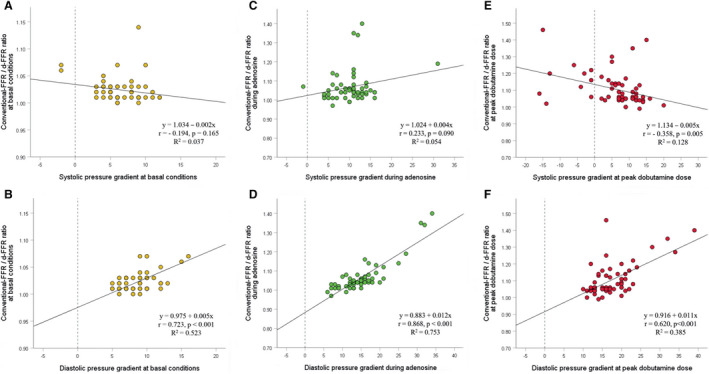Figure 5. Influence of systolic pressure gradient (A, C, and E), and diastolic pressure gradient (B, D, and F) across the myocardial bridging (MB) on the discrepancy between conventional‐fractional flow reserve (FFR) and diastolic‐FFR (d‐FFR) measurements after adenosine and peak dobutamine infusion, expressed as the conventional‐FFR/d‐FFR ratio.

Diastolic pressure gradient had a significant direct influence on the discrepancy in all conditions, meaning that its increase leads to a significant decrease in d‐FFR values. Systolic pressure gradient had a significant inverse influence on the discrepancy only at peak dobutamine dose, meaning that its decrease or negativization during dobutamine provocation leads to a significant increase in conventional‐FFR values, reaching maximal in patients with negative systolic pressure gradient across the MB.
